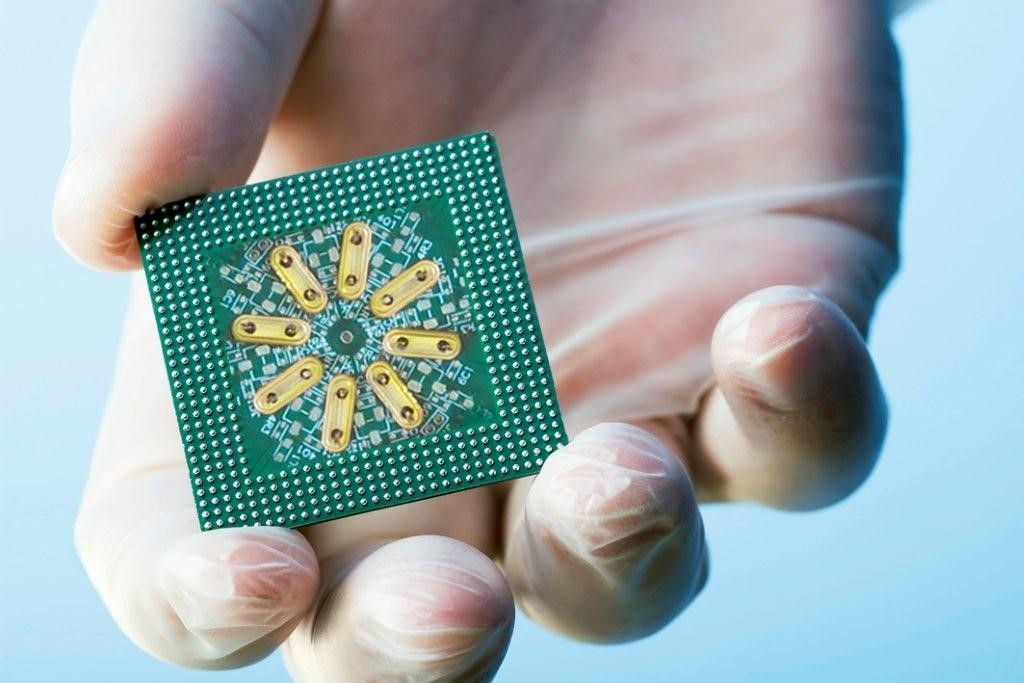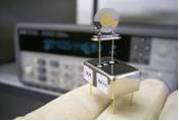HF-QCM Sensors
High-Frequency Quartz Crystal Microbalance (HF-QCM) Technologies
The patented High-Frequency Quartz Crystal Microbalance (HF-QCM) sensor technologies can detect a wide range of substances with great accuracy and speed. The core sensor technologies are multi-disciplinary and integrate innovative technological developments and deep know-how from various scientific disciplines. They digitally recreate the mammalian olfactory process, essentially creating an e-nose that is capable of detecting trace amounts of any source substance.
The MS Tech Sensor R&D Center has developed a wide range of HF-QCM sensors based on a multi-disciplinary approach that integrates: QCM technologies, plasma etching, chemical coating and deposition technologies, micro-mechanics, electronics, algorithms and digital data processing. The scientific development includes a large bank of thin chemical coatings (polymer, monolayer and antibody) that can be applied on the active surface of HF-QCM sensors. Each of these coatings has a specific affinity to different substances, and is designed to selectively interact with the target molecules. The sensors are formed in a patented ‘Sensor Matrix’ structure that offers high sensitivity, selectivity and specificity to a wide range of molecules.
The sensitivity of a HF-QCM sensor is proportional to a square of frequency of the quartz resonator and is defined by expression, in which the sensor frequency change depends on the adsorbed mass as follows:
Δf = (-2.3 x 10-6) f2 ΔM/A;
*Where: Δf[Hz] – frequency change under the influence of adsorbed mass ΔM;
F (Hz) – resonance frequency of a QCM sensor;
A (cm2) – electrodes area (two sides) of a QCM sensor where is accumulate of adsorbed mass ΔM;
The HF-QCM sensors have the capacity to detect and identify traces of materials in gas, vapor and liquid phases, even at very low concentrations. The sensors can be operated in various temperature ranges (from -20°C to +60°C) and at a humidity range of 5% to 95% RH without condensation.
Scientific Principle of Operation
The HF-QCM sensor technologies are an amalgamation of several scientific disciplines, digitally recreating the mammalian olfactory processes. They are based on the piezoelectric theory where molecules adsorbed on the surface of selective chemical coatings create changes in the mass weight of HF-QCM sensors. This process affects their resonating frequency and provides a unique digital signature or fingerprint for each target substance. The changes are accurately measured within seconds through a combination of HF-QCM sensors and powerful pattern recognition algorithms.
Typical Response Curves
The dynamic range of resonating frequency of the HF-QCM sensors is typically between several to a few hundred MHz’s. In each sample analysis, the frequency responses of all sensors are measured over pre-determined time intervals.
The sample identification process occurs when pattern recognition algorithms process the received digital signature and match it with an existing database of substances stored in the instrument. The HF-QCM sensors responses create a digital signature characterizing the HF-QCM Sensor Matrix reaction to a specific material inserted for analysis.
The Sensor Matrix response for a given sample is systematically measured and consistent, to the extent that the likely ranges of target molecules and typical interferents have been previously inserted to the database.
The distribution of the Sensor Matrix responses to analyzed samples can be plotted as histograms. This technological concept enables a fast adaptation and flexibility in “learning” to detect and identify new target substances while maintaining low false alarm rates.

HF-QCM Sensor Array

Quartz Crystal Microbalance Sensor
Technical Datasheets
Integrating technology for your future


